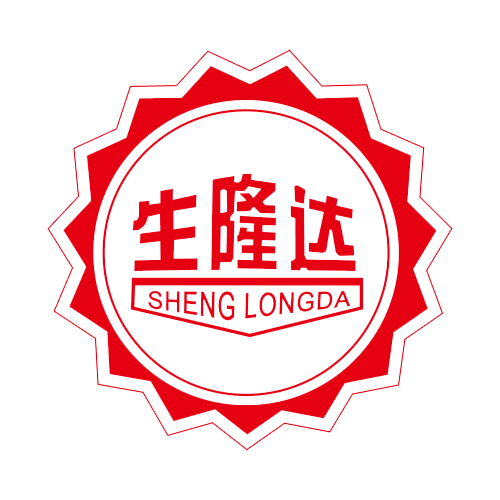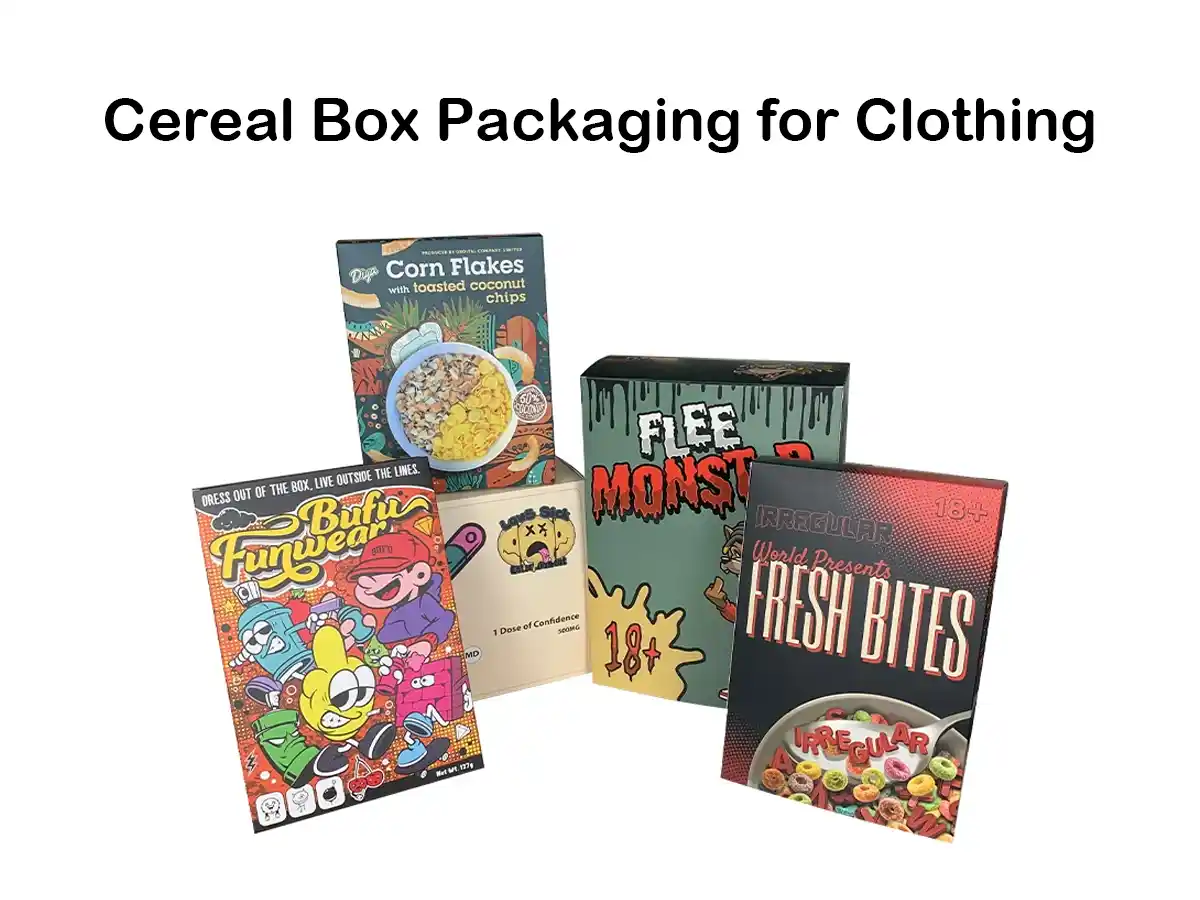Unboxing a T-shirt that feels like opening your favorite breakfast cereal? It’s not just a marketing gimmick — it’s one of the most creative packaging trends gaining traction in the apparel world.
In an age where packaging speaks just as loudly as the product itself, brands are reimagining how fashion is delivered. One of the boldest moves? Using cereal box-style packaging for clothing — merging playful nostalgia with sharp brand identity. But is it just a passing novelty, or a smart, strategic packaging move?
Let’s take a closer look.
1.What Is Cereal Box Packaging in Fashion?
At its core, cereal box packaging for clothing is exactly what it sounds like: fashion items — often T-shirts, socks, or accessories — packaged inside a custom-printed cardboard box that mimics the look and feel of a classic cereal box. Think bright colors, faux nutrition labels, tongue-in-cheek mascots, and retro breakfast vibes.
This approach appeals strongly to Gen Z and millennial consumers, who gravitate toward humor, nostalgia, and shareable unboxing experiences. You’ll often see these packages on social media, cleverly staged like real cereal boxes — only to reveal streetwear inside.
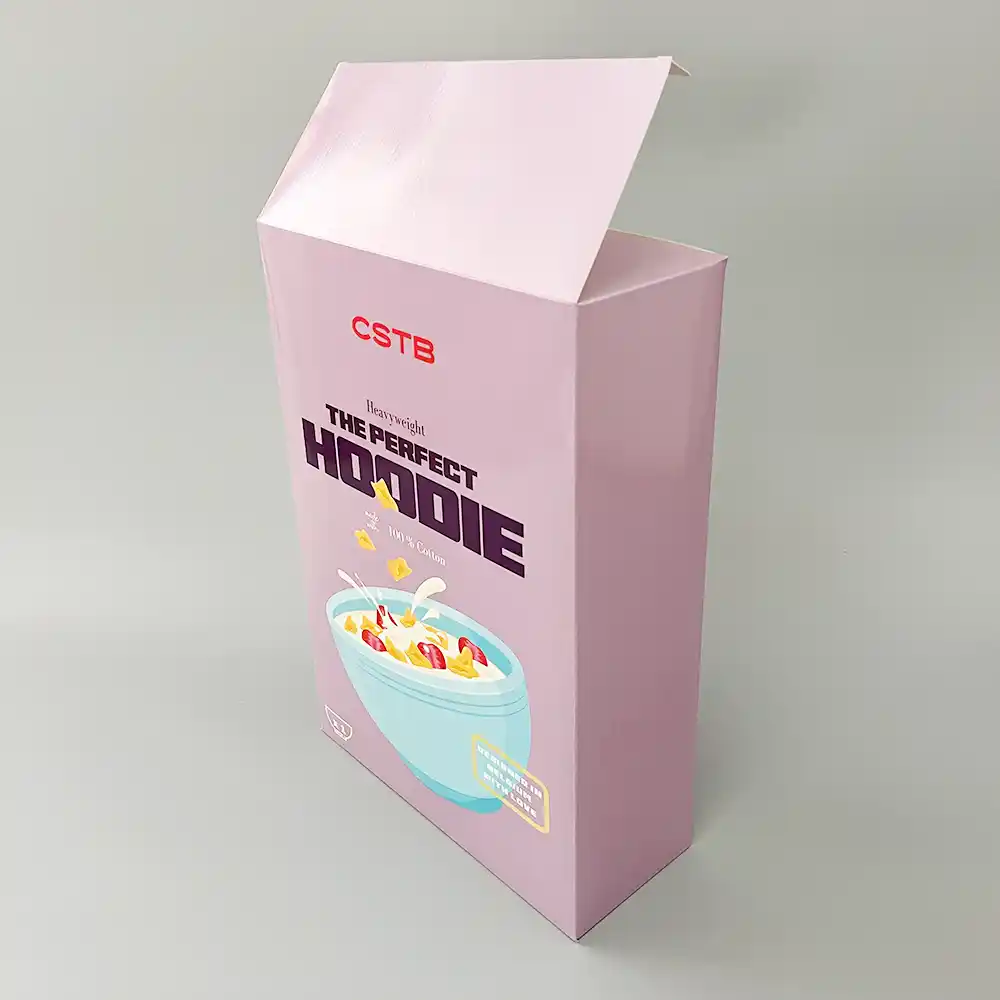
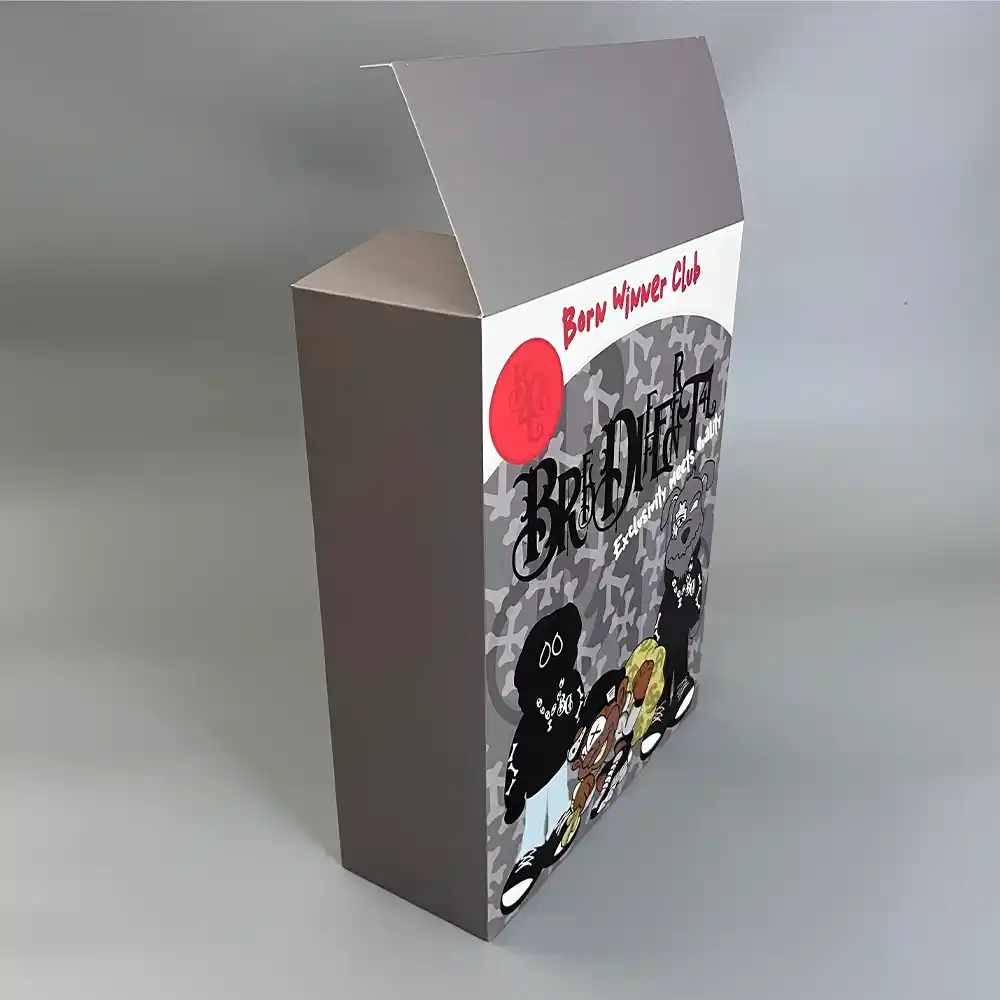
2.Why Are Brands Choosing This Format?
🎯 1. Standout Branding
In a crowded online and retail market, visual impact is everything. A T-shirt in a standard mailer? Forgettable. A T-shirt in a cereal box? Instantly Instagrammable.
📱 2. Viral Potential
The quirky concept encourages social sharing. Customers are far more likely to post creative packaging — especially when it surprises or entertains them.
🧠 3. Storytelling Power
Cereal box packaging taps into childhood memories. It lets brands build a character, a fictional world, or a campaign around their product — all in one compact box.
💡 4. Functional and Cost-Effective
Structurally, these boxes are made from folding carton board or corrugated paper, making them lightweight, recyclable, and cost-efficient to produce, especially for short runs or limited editions.
3.Packaging That Adds Value
This trend isn’t just about looks — it’s about creating a memorable customer experience. From a packaging manufacturer’s point of view, cereal-style boxes are a smart choice for brands that want:
- Fully customizable printing (offset or digital)
- Matte/gloss lamination, embossing, or foil stamping
- Flat-packed shipping for lower logistics cost
- Eco-conscious packaging made from FSC-certified paperboard
Packaging isn’t just a container — it’s part of the product. This type of novelty presentation turns a basic item into a conversation piece.
4.Is It a Passing Trend or Long-Term Shift?
While the cereal box concept may sound niche, it aligns with broader shifts in creative, experience-driven packaging. Especially in streetwear, pop-up shops, and online DTC (Direct to Consumer) brands, these unique boxes help differentiate even basic products.
We’re also seeing this idea spread beyond T-shirts — into socks, underwear, accessories, and even small tech gadgets. And as sustainability becomes a key driver, paper-based packaging solutions like these continue to grow in appeal.
It may have started as a playful stunt, but its cleverness, functionality, and eco-alignment suggest it’s more than just a passing phase.
5.Things to Consider Before Using Cereal Box Packaging
If you’re a fashion brand considering this packaging format, here are some key points to keep in mind:
✅ 1. Material & Durability
Choose sturdy 300-400gsm paperboard or corrugated stock to maintain shape during transit.
✅ 2. Printing Details
Ensure high-resolution printing for graphic-heavy designs. Use CMYK or Pantone matching for consistent color fidelity.
✅ 3. Structural Design
Custom dielines are essential. Consider inner trays or folded inserts to keep garments in place.
✅ 4. Brand Alignment
Don’t use cereal-themed packaging just for shock value. It should still tie into your brand’s personality and campaign message.
✅ 5. Manufacturing Partner
Work with a packaging supplier that supports low minimum order quantities (MOQs), fast prototyping, and custom structural engineering — especially if you’re testing the format on a limited release.

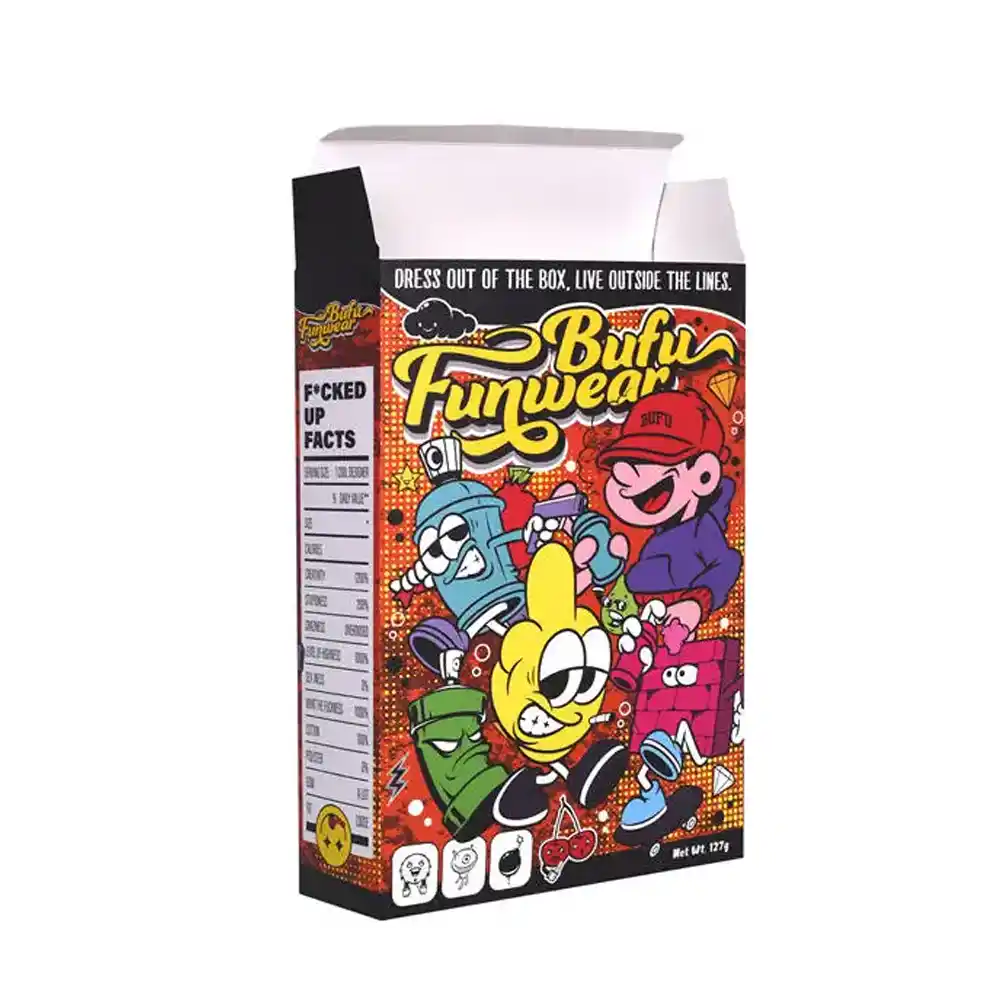
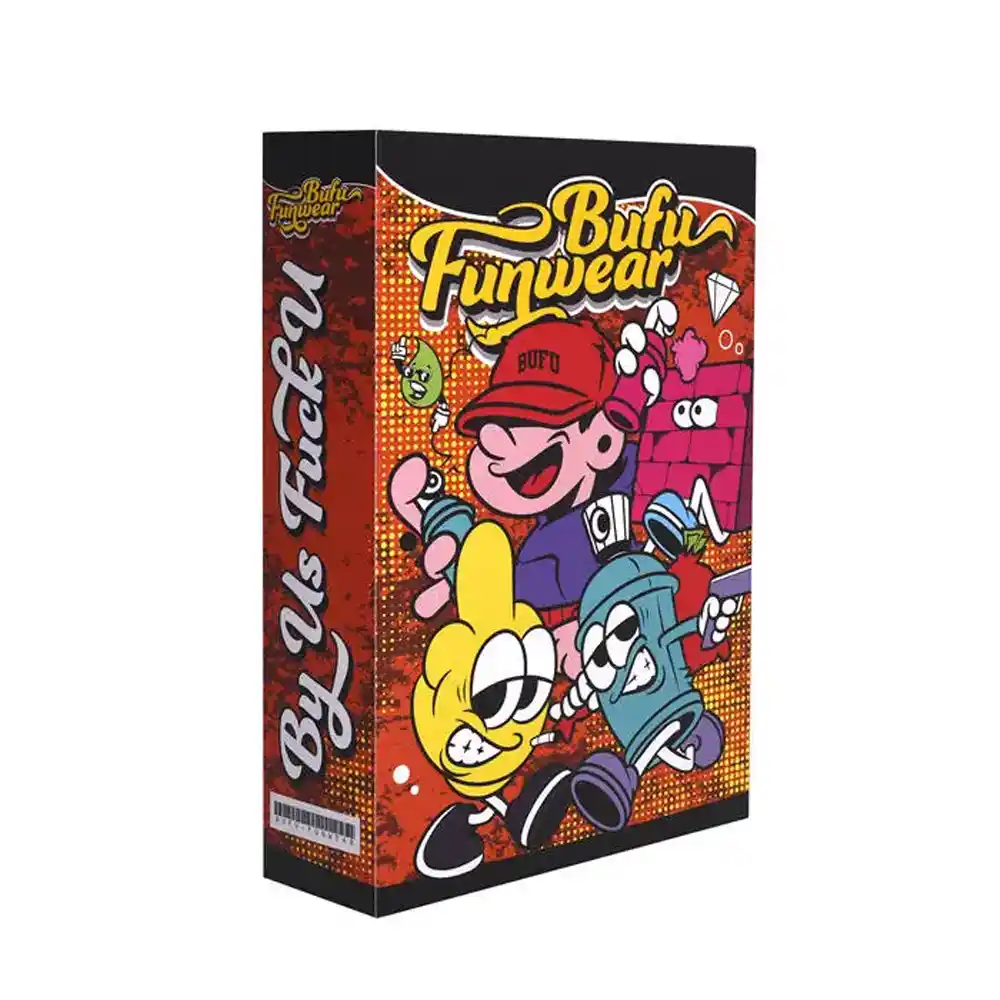
6.Box Structure & Paperboard Thickness: Design That Looks Fun and Performs Strong

While all these clothing boxes mimic the look of cereal packaging, not all are built the same. As shown in the example above, both are made of paperboard (300g–400g), but the structural design and paper weight differ based on the type of clothing being packed.
📦 Left Box – For Hoodies, Jackets, and Heavier Apparel
- Structure: Auto-lock bottom (also called crash-lock or self-locking bottom)
- Key Features:
- Offers superior strength and durability for bulkier garments.
- Quick to assemble — ideal for fulfillment and eCommerce packaging.
- Recommended Paperboard Weight:400g
- Provides enhanced rigidity and crush resistance to protect heavier products.
📦 Right Box – For T-Shirts and Lightweight Clothing
- Structure: Tuck-end bottom (standard cereal box style)
- Key Features:
- Lightweight and cost-efficient.
- Easy to store flat and assemble — great for high-volume runs and limited editions.
- Recommended Paperboard Weight:350g
- Sufficient for lightweight apparel while maintaining print quality and structure.
✅ Shared Advantages
- Both box styles are fully recyclable and eco-friendly, aligning with sustainable packaging goals.
- Compatible with CMYK or Pantone printing, as well as finishing options like matte/gloss lamination, embossing, and spot UV.
- Can be custom-sized and printed with eye-catching designs that match the brand’s aesthetic.
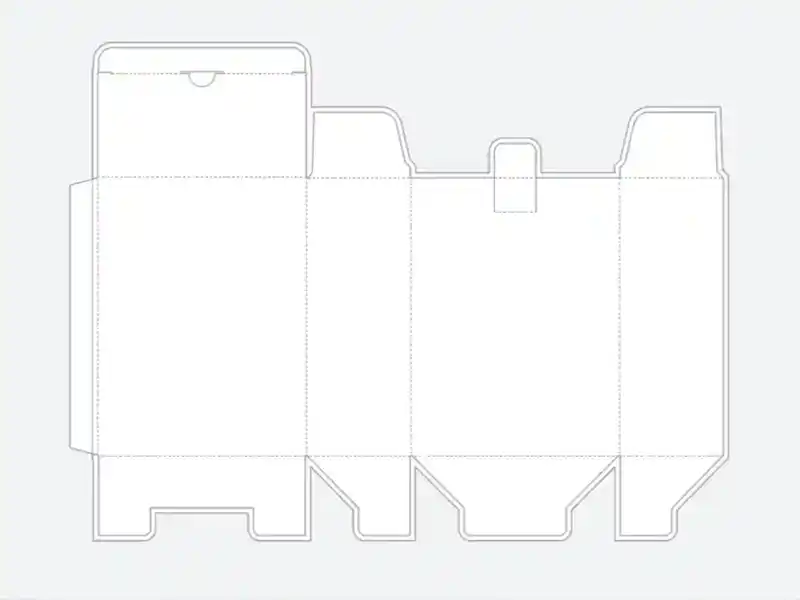

📌 Pro Tip: As shown in the structural diagrams, the auto-lock bottom (left) has stronger bottom support ideal for heavier garments, while the tuck-end bottom (right) is better suited for lightweight items with lower structural demands.
7.Final Thoughts
Cereal box packaging for clothing is more than a fun trend — it’s a creative approach to branding, storytelling, and customer engagement. It challenges the way we think about packaging, especially in fashion, where presentation is half the battle.
For packaging manufacturers, it’s an opportunity to partner with forward-thinking brands that value innovation, design, and sustainability. As novelty packaging becomes part of mainstream product strategies, expect to see more brands reaching for the breakfast aisle — even when they’re selling streetwear.
